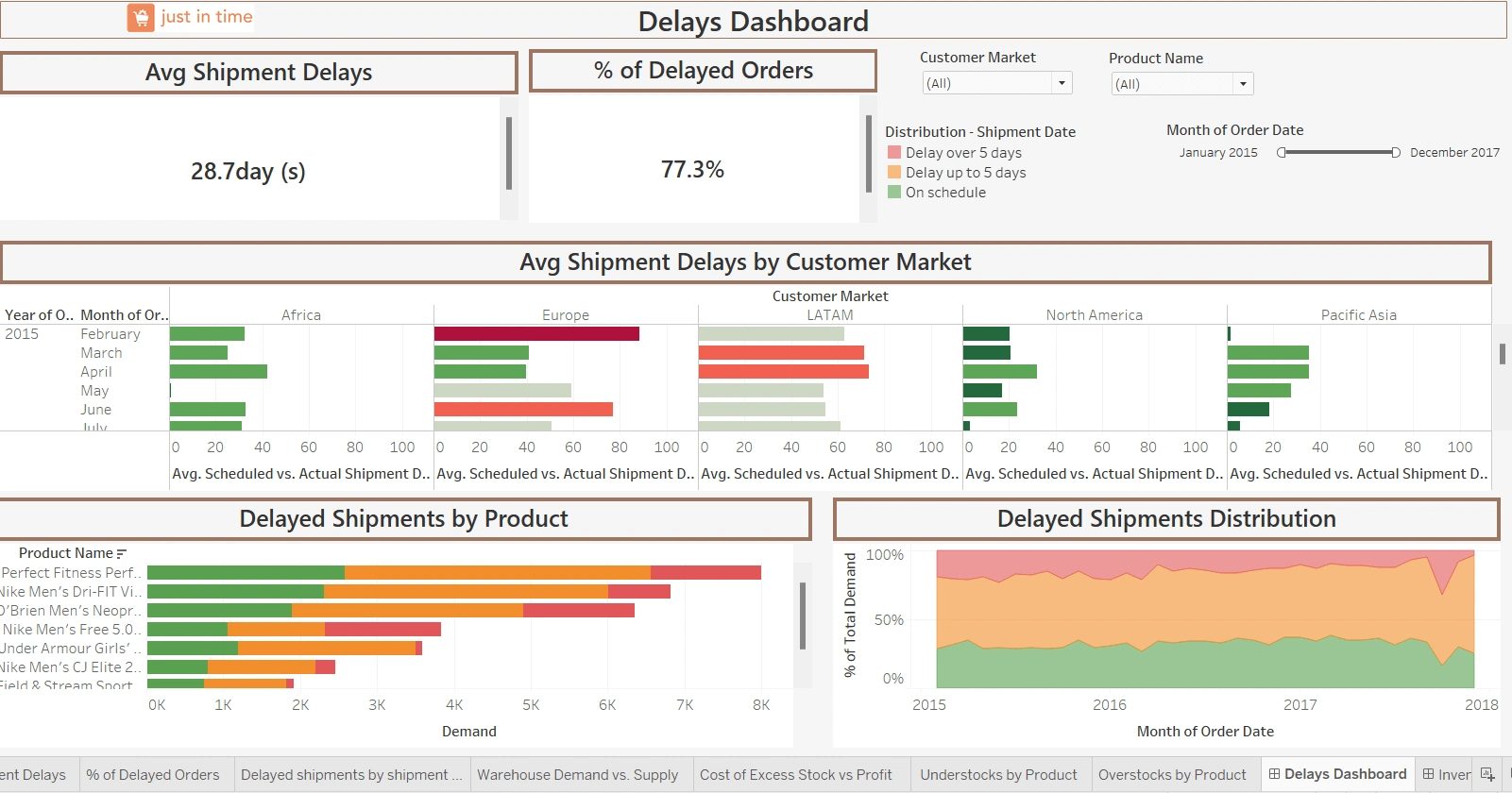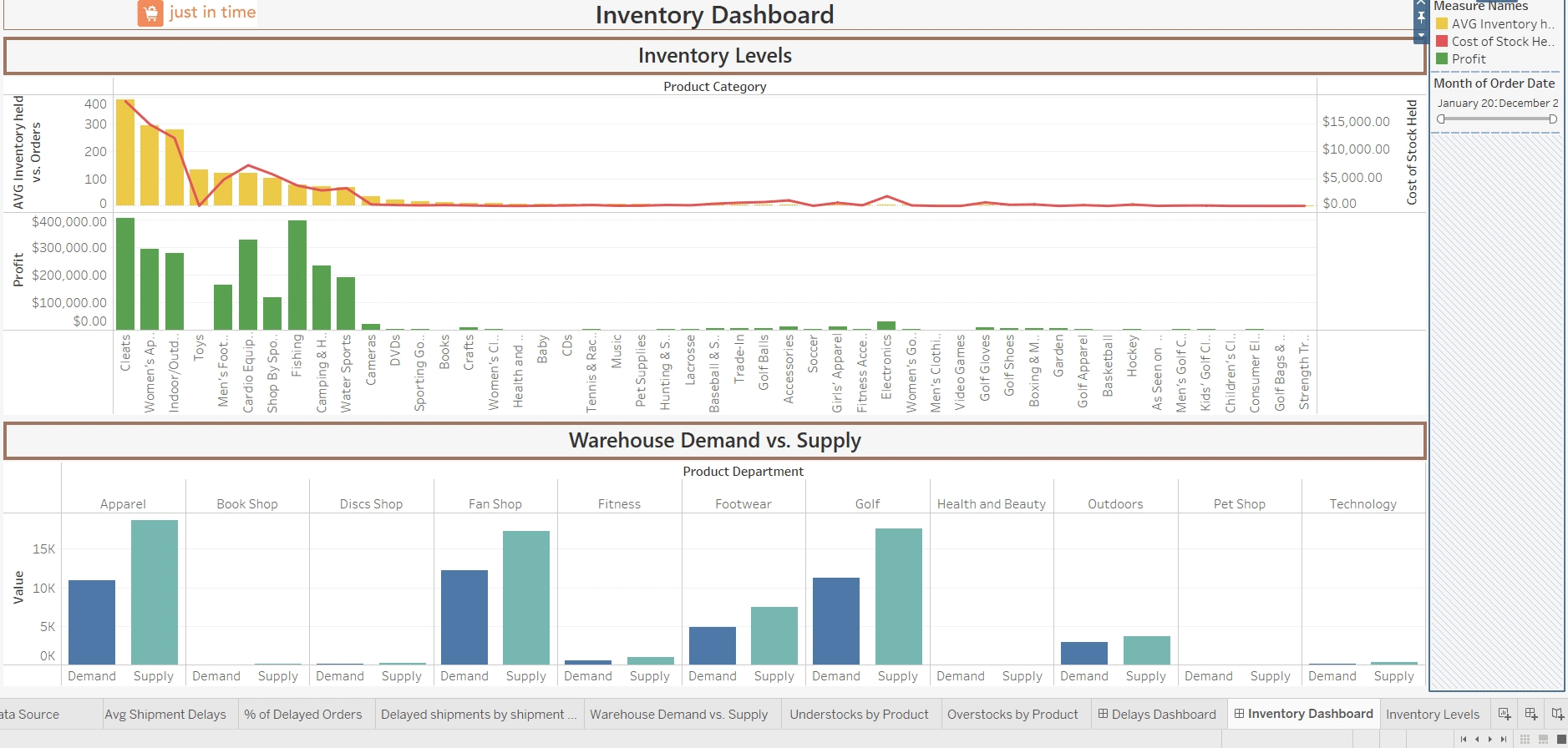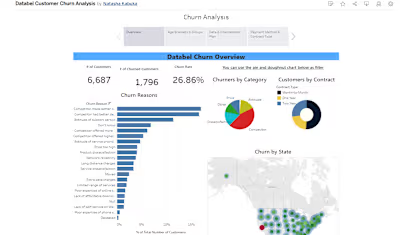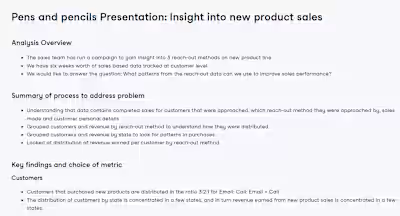Supply Chain Analytics in Tableau
Problem Space:
Just In Time is a retailer for products that are manufactured by their suppliers. Just in Time has two warehouses in the US and Mexico that hold inventory before it is shipped out to consumers. Just in Time's client base is distributed globally. Prior to digging into the data, the key perceived challenges communicated by stakeholders are in shipment, inventory management challenges and supply chain inefficiencies. I will dig into the data and provide dashboards that provide insights and recommendations to solve the key problems experienced at Just in Time.
🧾 Executive summary
The key Supply Chain issues for Just in Time are:
Data Quality: just under 10% of the shipment order data had an anomaly where the date of shipment was less than than the order date. In reality, an order needs to be created before it is shipped out and so we would always expect the shipment date to be greater than the order date. With the inability to inquire over these cases, such rows have been dropped from the data to avoid making the wrong conclusions around 'early shipments'
The need to employ "just in time" stock ordering system :Assessment of stock items that are either understocked (where total quantity ordered is higher than the inventory held in that month) or overstocked (where total quantity ordered is lower than the inventory held in that month) shows that overstocked items tend to be the more profitable ones, and understocked less profitable.


Key findings from visualizations:
For this analysis, it was noted that 2,735 rows of shipment data - just under 10% of the shipment order data had an anomaly where the date of shipment was less than than the order date. In reality, an order needs to be created before it is shipped out and so we would always expect the shipment date to be greater than the order date. With the inability to inquire over these cases, such rows have been dropped from the data to avoid making the wrong conclusions around 'early shipments'
Between 2015 and 2017, Just in Time experienced shipment challenges, with an average of 77% of deliveries being delayed up to and over 5 days, with an average of 30.8 day shipping delays over the same time period. From November 2016 onwards, the average delays reduced to 6.8 days, even though about 72% of orders were still delayed.
From October 2016 onwards, we observe a reduction in over 5 day delays, which decline from 15 in October 2016 to 3% in December 2017. This is mostly driven by reduction in delays in North America, Africa and Europe.
This delay challenges make it important to dig into demand vs. supply data to dig into clues over why the delays are so high.
Assessment of stock items that are either understocked (where total quantity ordered is higher than the inventory held in that month) or overstocked (where total quantity ordered is lower than the inventory held in that month) shows that overstocked items tend to be the more profitable ones, and understocked less profitable.
Recommendation: Rather than prioritizing holding higher stock levels for more profitable products, it would be beneficial for Just in time to record stock available per inventory item per day to allow business to keep track of demand vs. supply on a daily basis. This would enable the business to optimize quantities of stock held and reduce costs from holding excess stock.
Like this project
Posted Jan 23, 2024
This project uses supply chain data to provide recommendations on how to improve operational efficiency.






